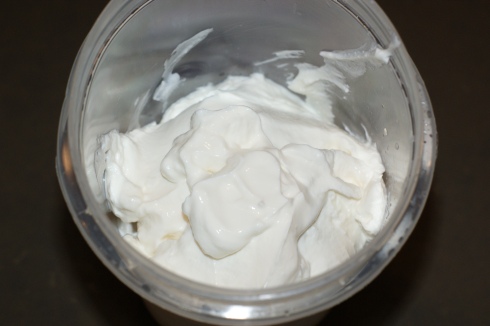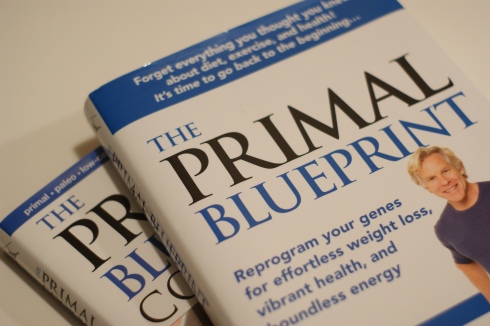You are currently browsing the monthly archive for May 2011.
Yogurt goes fast in our house. It’s eaten for breakfast and snack, mixed into dips and dressings, and topped on chili and soups. My favorite way of eating it is unsweetened Greek yogurt with berries and bananas or raisins and slice almonds. The thing is Greek yogurt is more expensive than its runnier counter parts. And most chain supermarkets don’t carry the full fat variety. So it’s non-fat or low-fat yogurt mixed with some other gunky fat-replacer or stabilizer. They also have lots of sugar. After seeing AndreAnna’s yummy post on homemade yogurt at Life as A Plate, I figured I can make it myself, hopefully save some money and get a pretty decent product.
When searching for yogurt making methods, I had no luck finding one that didn’t require cooking the milk first. All the recipes start with pasteurized milk which is followed by further cooking the milk. Why? I imagine it’s because you are killing off any unfriendly bacteria that may compete with or impede the friendly, yogurt-making kind, but no where does it say so in any of the recipes or blogs I found. Even more curious is that all the buttermilk or sour cream instructions I dug up just have you mix the milk or cream with the starter and leave it at room temperature to culture. I totally get why you’d need to heat the milk if you were using raw milk since it has yeasts and other organisms not found in pasteurized milk. I tried using raw milk, without cooking it, and I don’t recommend it. It turned out more like kefir and a bit cheesy.
There are two reasons I don’t want to cook the milk, the most important of which is I don’t want to go through the extra step. I’m on a path to simplify. The other reason is I don’t see the need for it. I’m already buying pasteurized milk and there is no fooling around with it between the time I open the carton to the time it meets the other ingredients, so I am not worried about contamination. I was determined to skip straight to the culturing part and see what happens. The worst is the milk doesn’t magically turn into yogurt or it smells funky and I won’t do it again. But that didn’t happen. I made perfectly good yogurt with the first batch and every one after that (well, except for the kefiry batch).
There are several methods for preparing your own yogurt and they all require time and a warm place. That can be done with a heating pad, an insulated cooler, a slow cooker, a yogurt maker, a warm oven or a dehydrator. I have a dehydrator so I opted for that which is a very good thing because it has a setting for yogurt. If I had to guess at the right temperature, my first batch either would have still been milk or probably baked.
No-Cook Yogurt
2 cups organic, pasteurized milk
1/2 to 1 cup organic heavy cream
1/4 to 1/2 cup starter yogurt (purchased or from a previous batch)
- Mix milk, cream and starter yogurt together in a bowl.
- Cover and place in a dehydrator or warm place (105 to 115 degrees F) for at least 8 hours and up to 24 hours.
- Chill yogurt in refrigerator to set up, a few hours to overnight.
- Strain yogurt using a paper towel or cheesecloth-lined colander over a bowl. The whey will drain out.
- Transfer yogurt to air tight container once it reaches the desired thickness. Keep in refrigerator for up to a week.
I have made this so many times now that I don’t even bother to measure anything out. I make the biggest batch that will fit in the dehydrator and just eyeball the ingredients. Feel free to adjust the ratio of milk to cream or omit the cream all together if you don’t mind a thinner yogurt. This unsweetened version is a blank canvas for all kinds of mix-ins: honey, jam, fresh fruit, granola, and more. My daughter loves tart yogurt and doesn’t need any sweetener to enjoy it. How will you eat it?
I am back from a sun-drenched vacation (glorious!) and returned to dingey, overcast skies that are practicing for June gloom. It’s left me feeling sort of blah in a couple of ways. Blah because vacay is over and work is on the agenda. Also blah because I feel gross from indulging in food I normally don’t. So to reset myself, I’ve embarked on a cleanse. Knowing that I’m giving my digestive system a bit of a break is helpful and leads me back to a more normal – and primal – way of eating.
I’ve never really explained when I started this pokey little blog on why I choose primal living. I choose [present tense] because it’s a conscious decision I make everyday. And what I decide today can be different than what I decide tomorrow or next year (obviously like when I was on vacation). My husband is really the one who got me more in tune with a healthier lifestyle. Because he has done so much research into natural supplements and alternative medicine, I followed his lead. My initial forays into healthier eating started with the goal of losing weight. I followed conventional trends: low-fat, low-carb, vegetarian, soy-everything. But I started to wonder if a trend was so healthy, why doesn’t it stay that way instead of being replaced with a new one? It all got to be very confusing. Then everything changed the year my first child died and I was diagnosed with cancer. My heart was broken and so was my body. I could not see beyond my grief to care about what I was feeding myself.
It has taken me a long time to feel anything more than loss and despair but I have come a long way. Once I started to feel more hopeful and was looking toward the future, I realized that I had to change my lifestyle to live and to thrive. I had to be as healthy as I could to be a wife and mom. In addition to conventional medicine, I sought out homeopathy, acupuncture, and spiritual guidance. Thankfully, a year and a half ago, I landed on Mark’s Daily Apple and found what I was looking for. It all seemed so clear and simple and exactly what I needed. I was first introduced to the Paleo Diet by a co-worker years ago, but didn’t give it more than a fleeting thought since it seemed ludicrous to give up bread (serious?) My friend also didn’t consume dairy, season her food or really invest in the process of cooking. She took in the nutrients she needed and that was it. While that approach didn’t appeal much to me, I was intrigued and agreed with many of the paleo principals. The foods we eat shouldn’t be able to sit in a box on a shelf for years and they shouldn’t have a list of ingredients that takes longer to read than to actually prepare. The idea made a home in my brain and continued to pop in and out for the next several years. As I discovered the Primal Blueprint
, it all came together and I knew what I was missing. Mark Sisson breaks it down and keeps it straightforward and I was ready to make the change. Hubby and baby were coming along.
While there were certain aspects of our diet that didn’t need a whole lot of tweaking – we’d already been buying organic produce and grass-fed meat – we were still eating a whole lot of grain. I went from white flour to whole wheat to sprouted berries but it was all still wheat and gluten. I was making homemade bread to avoid preservatives and refined flour but was adding vital wheat gluten to help them rise. And then there was the sugar. My rotten sweet tooth couldn’t grasp how to bake without sugar. I have since been schooled on the subject and found a wealth of information and recipes. Thank you, internet!
One of the greatest things about the Primal Blueprint is that it factors in the idea of eating like a caveman with living in a modern setting. Strict adherence, while admirable, is not required nor realistic. For a while, I thought my recurring rash may have been food related, possibly wheat, and I have made the choice to eliminate gluten as much as knowingly possible. We do occasionally , however, have other types of grains and pseudo-cereals such as rice, and millet and quinoa. Eating this way certainly has it’s challenges and I think we have fared reasonably well. Although, I am finding that influencing your child’s diet is tough enough without having to exclude all the stuff that other kiddies are eating. That’s for another post. I love to cook and share my food and have found that I am cooking so much more than ever before. It’s inevitable if you’re bent on having fresh, nutrient-dense food but I don’t mind the extra work. I prepare all of my daughter’s meals and snacks for daycare even though I don’t have to. This way I know she won’t be eating the same empty calories that her little friends get.
This has been an evolution. I am still learning about food, nutrition and fitness and it has been wonderful to find an ever expanding community of primal and paleo eaters. I would love to hear about your experiences. Grok on!



